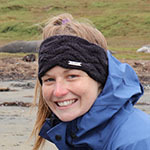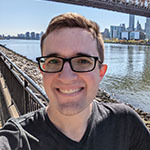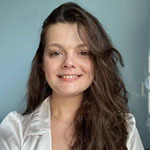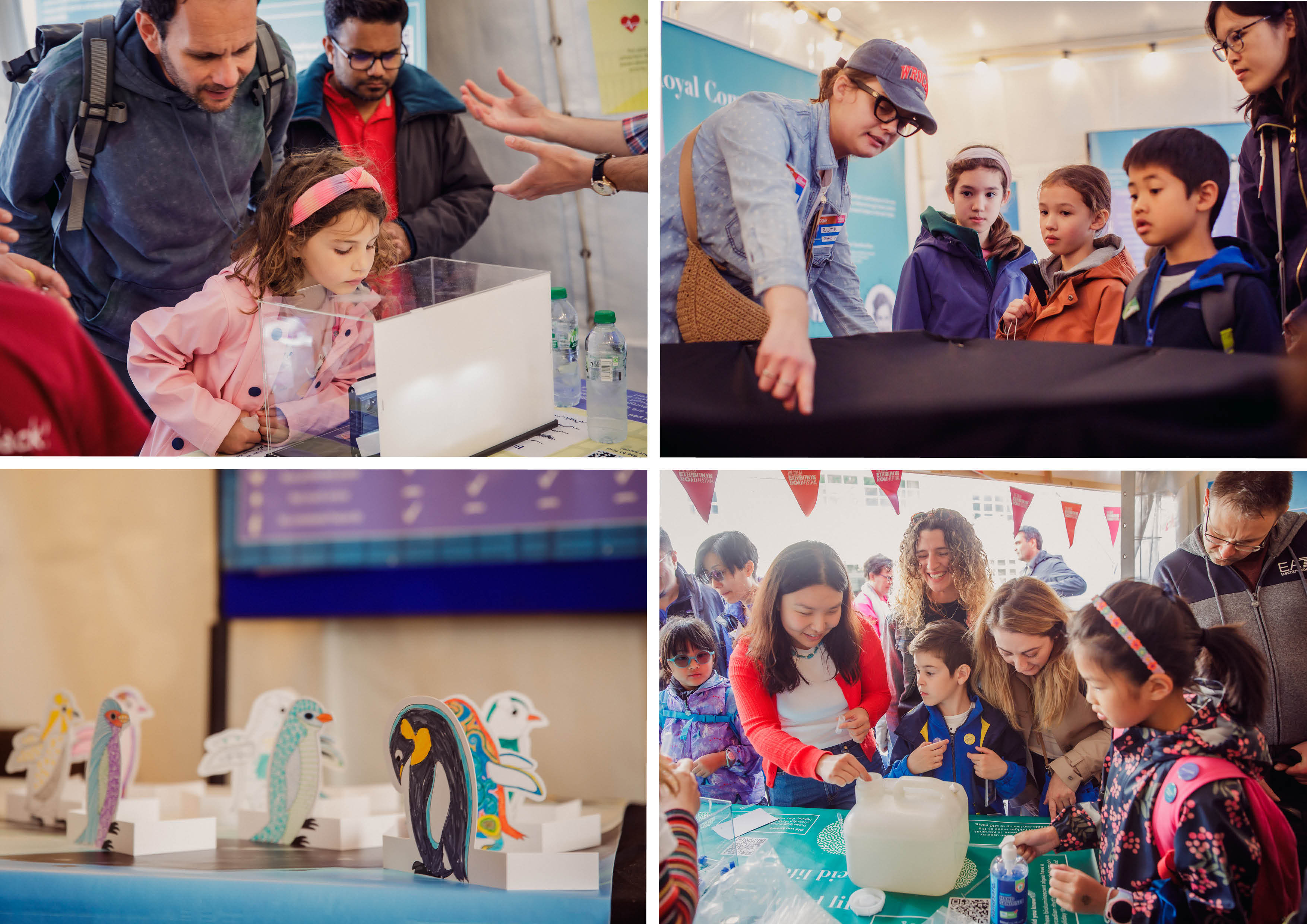2024 Great Exhibition Road Festival: 1851der Tent
Events
Posted: 18/04/2024
2024 Great Exhibition Road Festival
1851der Tent
Since 2019, The Great Exhibition Road Festival has celebrated science and the arts by offering the public a free annual summer event in South Kensington. Instigated by The Royal Commission for the Exhibition of 1851 the Festival is organised by Imperial College London, in partnership with the Natural History Museum, the Science Museum, the V&A, the Royal College of Music, and other institutions on the road.
The weekend-long Great Exhibition Road Festival is the only period in the calendar year when Exhibition Road is closed to traffic creating a wide and welcoming space for the public. Programming from the iconic museums, research institutions, and cultural organisations across the cultural quarter offers visitors a diverse range of engaging hands-on workshops, research frontier talks, captivating performances, and installations.
This year, the festival was held on Saturday 15th and Sunday 16th June 2024, drawing an impressive attendance of approximately 54,000 people over the two-day event.
Exhibits and Fellows
Penguin Party
Antarctica is one of the world's last great wildernesses, and is home to some of our favourite animals – penguins!! It is also one of the only places left on the planet that is still free from human touch. Or is it…
Experience life from the perspective of a penguin breeding in Antarctica. You could be a fiery Adélie penguin, a chilled gentoo, a stylish chinstrap, or a magnificent emperor. Colour in your chosen species and enter your penguin into the colony to see how it fares during our interactive game!
However, penguins are in peril, from global climate change, and local pollution, to growing fishing and other human activities. Penguin adults want to breed successfully and see their chicks survive until they can enter the water themselves – but can they survive in the face of so many threats?
Come and learn about how conservation scientists work to understand penguins and other species living in Antarctica. And find out how we can best protect them and help them to survive into the future!
This exhibit was specifically designed for young children aged 3 - 9 years, providing clear information about the dangers faced by penguins in Antarctica and what is needed for penguins to thrive.
If you want to learn more about penguins, check out Penguin Watch.
Jasmine Lee

Hi, my name is Jasmine Lee and I am an 1851 Research Fellow at the British Antarctic Survey in Cambridge. I’m a conservation scientist and I work toward understanding what threatens Antarctic species and what we can do to stop these threats. I work mostly on land-based (terrestrial) species, which include plants, mosses, little invertebrates, and breeding seabirds (like penguins). The threats include global things, like climate change, and more local things, like growing human activity, fishing, and pollution. Most of my work is on the computer as I do lots of mapping and modelling, though sometimes I get to go on a very cool field trip!
Stellar Streams
One of the major unsolved problems in physics is the nature of dark matter. It accounts for 25% of the universe and is responsible for binding stars and galaxies together. However, it is completely undetectable. We cannot see, weigh, measure, or observe it in any way, even though there are millions to billions of dark matter particles flying through us each second.
So how do astronomers know it’s there? One way is to look at the patterns made by stellar streams. As galaxies form and grow, they become massive enough to pull smaller galaxies into their orbit. The gravitational pull from the larger host galaxy causes the smaller satellite galaxies to unravel and create long, thin streams of stars called stellar streams.
Stellar streams are very sensitive to how much mass is nearby. If a clump of dark matter that doesn’t contain any stars passes through a stream, it can cause gaps and other features in an otherwise smooth stream. Hunting for gaps in the stellar streams around the Milky Way helps astronomers understand more about dark matter and its role in the universe.
This collaboration was unique, as it combined the talents of Ruta, an innovative design engineer, with Alex's expertise as an Astronomer to create an exhibit that demonstrates the formation of solar streams through gravity explanation exercises. Ruta designed the structure of the exhibit to effectively illustrate these concepts based on an similar apparatus to one used to demonstrate Gravity.
Alex Riley and Ruta Arizona Czaplinska

Alex Riley is an astronomer and 1851 Research Fellow at Durham University. He studies dark matter and the history of our Milky Way using all-sky surveys that measure the motions of stars. He grew up in Cleveland, Ohio, USA and earned his PhD from Texas A&M University in 2022. In his free time, Alex has been playing Dungeons and Dragons, supporting Liverpool F.C., and catching up on Taskmaster. He lives with his wife and cat in Durham.

Ruta Arizona Czaplinska is a Designer and Engineer with a background in mechanical and biomedical engineering. She primarily works with start-ups within the medical and consumer electronics industry.
Ruta is currently a postgraduate student at Imperial College London and Royal College of Arts studying Innovation Design Engineering as well as a recipient of the prestigious Industrial Design Studentship awarded by the Royal Commission for the Exhibition of 1851.
Brains and Beyond
Ever wondered how you can wiggle your toes or taste your favourite food? It’s all thanks to the incredible nervous system, a complex web of highways that carries messages between your brain and every part of you.
Unveiling the Nervous System: Our bodies are marvels of communication, constantly sending and receiving messages. In this section, we’ll dive into the fascinating world of the nervous system, learning how it goes beyond the brain to control everything from movement to digestion. Discover how these tiny highways called nerves connect your entire body, allowing you to experience what is happening inside and around you.
Step into the Action!: Once you know a little about the nervous system, get ready to see it in action! We’ll have a special EEG headset for you to try. EEG stands for electroencephalogram, and it’s a way to measure your brainwaves, the electrical signals that fire when you think, feel, or move. Put on the headset and witness the incredible power of your brain firsthand!
Science in Action!: The future of technology is all about seamless interaction with our bodies. Here, we’ll showcase some of the devices we’ve created in our lab. These devices utilise innovative, cutting-edge materials that are incredibly small and flexible. Imagine technology that feels like a second skin for your brain and nerves, monitoring your health, and disease or even controlling prosthetic limbs. The possibilities are endless!
Children and adults of all ages LOVED this exhibit. It’s not every day you get the chance to see your brain waves. This fascinated all festival goers, and like the other exhibits, there were non stop queues.
Amparo Güemes

Dr. Amparo Güemes is a postdoctoral 1851 Research Fellow and a 2023 L’Oréal-UNESCO UK and Ireland For Women in Science Rising Talent Fellow at the University of Cambridge. Amparo's work focuses on unraveling the intricate relationship between the metabolic and nervous systems, both in states of health and disease, such as type 1 diabetes. She combines signal processing, advanced modeling techniques, bioelectronics, and electrophysiology to develop cutting-edge algorithms and neurotechnologies that enhance our understanding of fundamental physiological mechanisms. Her ultimate goal is to integrate these advancements into a closed-loop platform, with the overarching aim of enhancing metabolic control through neuromodulation. Amparo's research stands at the forefront of scientific exploration, paving the way for transformative advancements in medical science.
Lucid Life
Living materials have been used by different societies around the world for 1000s of years. Whether it is bridges made of tree roots in Asia, or living fences used to separate fields here in the UK; these living materials do not decay, capture carbon dioxide, and can heal, respond, and adapt to their environment.
However, our need for rapid, repeatable, and reliable materials means that most of us spend our days without touching a single living thing. In this exhibit you will see an example of both a traditional, and a futuristic living material.
The living willow chairs are made using traditional techniques to grow living willow branches into the shape of a chair. Take a seat, how does it feel for the chair beneath you to be alive? What object could you grow in your garden?
The glowing material found inside the box is made from bioluminescent algae, the same you see glowing in the ocean sometimes at night. Using modern scientific techniques, it is possible to capture these “dinoflagellates" inside a solid material, so that they can be used in objects in our day to day lives. When you touch the material at night, the algae will light up in response to the movement.
How else might we be able to go back to the future, and live alongside more living things?
The exhibit was exceptionally eye-catching, captivating the minds of all festival goers. One of the standout features was the chairs crafted from willow, which became an instant hit. These chairs reimagined an everyday object using natural plant material, showcasing an innovative blend of functionality and artistry.
Chris Bellamy
Chris is a biodesigner and engineer who is fascinated by how we can live in more sustainable and regenerative ways. After studying engineering at the University of Cambridge, Chris started his career at Jaguar Land Rover, helping to develop their first electric vehicle, the Jaguar I-Pace. He then stepped into the footwear and apparel industry, developing customizable and recyclable shoes, in the hope of reducing the impact of the 20+ billion pairs of shoes made every year.
After realizing the incremental improvements to plastics and metals would never be sufficient to meet climate targets, Chris changed his career to work with living things, as he believes nature does it better.
Chris has just finished his Masters in Biodesign at Central Saint Martins, University of the Arts, London. His research focused on how living materials could be used in our everyday lives, by evolving traditional knowledge with the latest scientific research.

